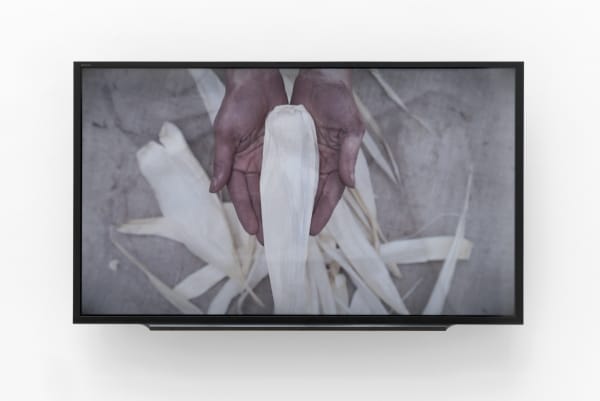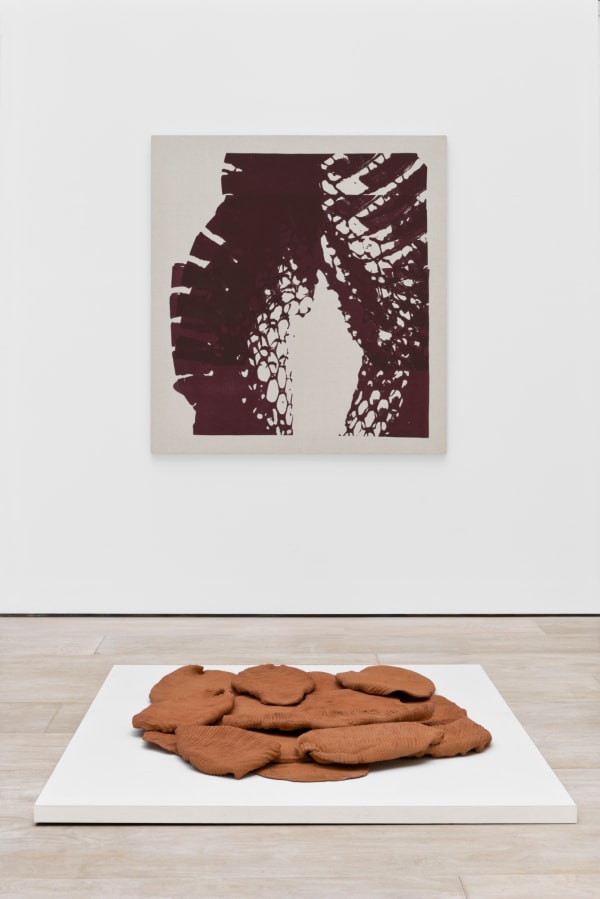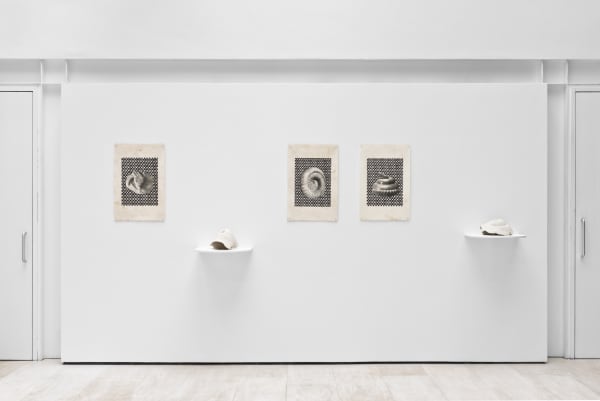Lucia Pizzani: Coraza
Cecilia Brunson Projects is pleased to present ‘Coraza’ by Lucía Pizzani. This new body of work has been developed over the last two years and from her recently completed residency at the Marso Foundation in Mexico.
The title, ‘Coraza’ (translated – ‘armour’), references the ceremony to the Aztec god of rebirth, Xipe Totec. As part of the ritual to celebrate the start of the corn cropping season, Aztec priests would peel the skin from defeated warriors before donning their flayed skins. Pizzani became fascinated by the ancient ceremony, and this exhibition is her parallel exploration into regeneration, transformation and metamorphosis through ceramics, photography, installation, collage and video.
In a new series of photocollages shown throughout the exhibition, Pizzani layers her own photographs of indigenous snake sculptures on top of amate paper – a type of tree bark paper that has been manufactured in Mexico since pre-Hispanic times. By syncretising medium, method and imagery, these photocollages allude to our own ‘Coraza’ – or as Pizzani calls it, ‘our second skin’.
Pizzani has produced a series of darker ceramic sculptures that are meticulous, organic forms that twist, fold and coil, as if shielding and protecting something within. Each sculpture references Xipe Totec as they are either imprinted by corn – the symbol of renovation and harvest – or resemble the texture of a shed snake skin.
Focusing on this motif of the shed snake skin, the four small photogram works are produced by taking the positive image of an amplified snake skin, then through a process of toning, turning the image from black-and-white, to the earthy sepia image displayed. The larger two canvas photograms are silkscreen prints of this photography-without-camera process. By using a palette of earthy colours and dark tones, Pizzani heightens sense of the organic and original materials used.
By relating the permanent state of violence in Aztec culture to her own Venezuelan identity, and the acute crisis her home country is in, Pizzani describes: ‘This violence isn't exclusive to Venezuela, although the situation is very personal and latent for me. We live in a time where multiple wars of many sizes and motives are happening in parallel.’












